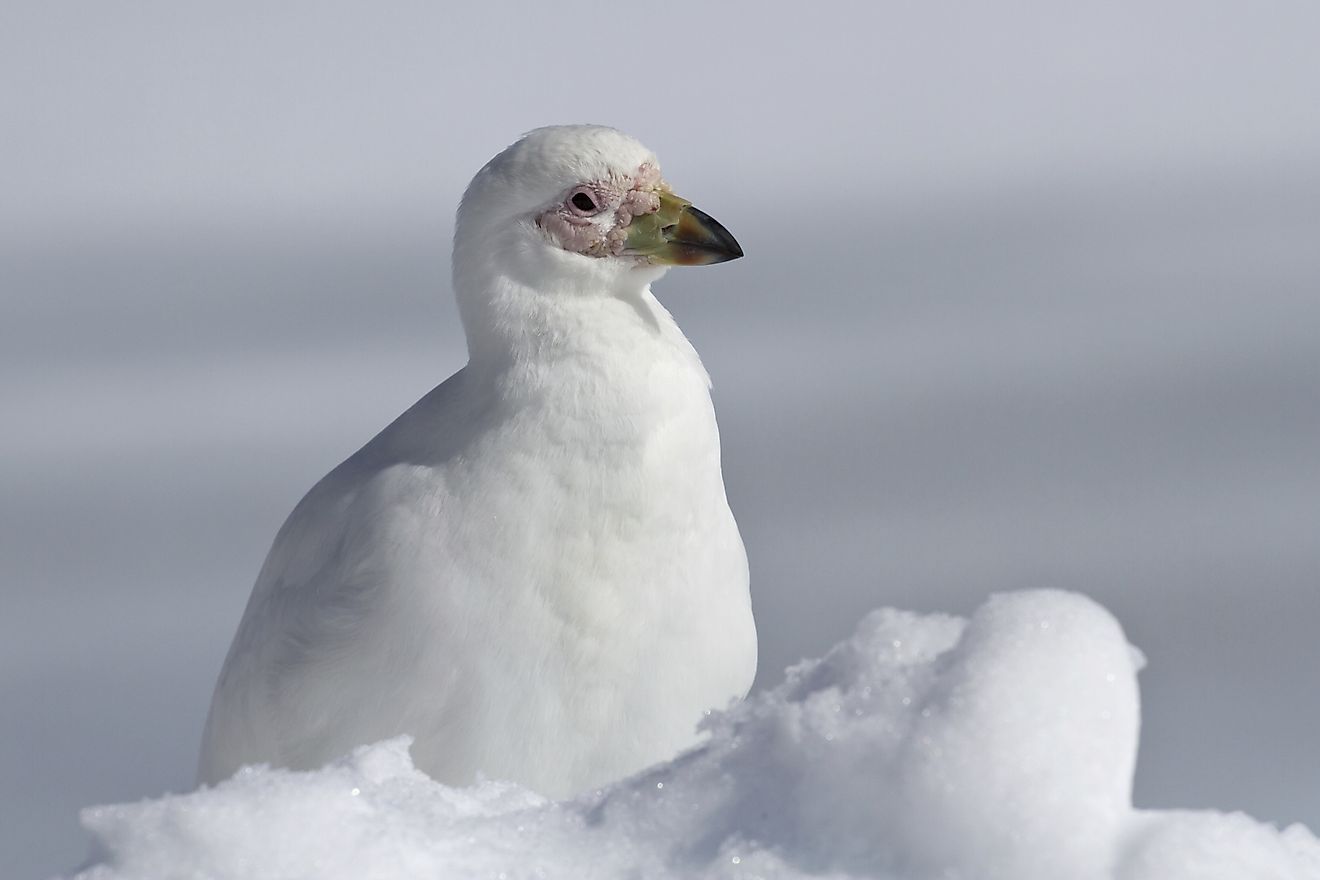Snowy Sheathbill Facts: Animals of Antarctica

5. Physical Description
The bird’s biological name is Chionis albus, and refers to its white coloration. It is also alternatively known as the Pale-Faced sheathbill, the Paddy sheathbill, and the Greater sheathbill. They have a distinction as the only land-based birds that are widespread across Antarctica. They are said to resemble a crossbreed between a domestic hen and a pigeon. Their common features include a strong, broad and conical-shaped bill, with a horny sheath partly covering the nostrils and fleshy protrusions known as “wattles”. The Snowy sheathbill’s body is strongly built, with sturdy feet, powerful legs, and elongated wings. Adults have a white under-layer that acts as an insulator during cold weathers. It is about 15-16 inches (380-410 mm) long with a 30-31.5 inch (760-800 mm) wingspan. It is pure white in color, except for its pink, warty face.
4. Diet
The bird is well-known as a scavenger, and will eat almost anything that it can find. During winter, the birds scavenge beachside scrap heaps or look for a range of invertebrates among the exposed masses of seaweed. During summer when the bird is breeding, it may dine upon stillbirths of its own or seals’ young, and probes seals’ wounds and take drinks of blood or bites of flesh. It also feeds on the placentas from birthing seals, and at times will try to eat their umbilical cords while they are still attached to the newborns. They also eat chicks, eggs, fresh feces, and carrion. They do not attack other birds for food, but will disrupt them when feeding their chicks so as to eat their spilled food.
3. Habitat and Range
The Snowy Sheathbill is the only land bird native to Antarctica other than penguins. The bird lives in Antarctica, the South Orkneys, South Georgia and the Scotia Arc. They breed on the rocky reefs found at Antarctic Peninsula, and several islands found along Scotia Arc. At certain periods of the year, they migrate north towards Argentina, Chile, the Falkland Islands and sometimes also Brazil. When breeding, the bird sacrifices rocky and sandy beaches and strays further inland to lowland and meadow bogs and tussock grass. In some other islands, they breed near human settlements. The bird is currently not considered to be faced with extinction due to its stable and widespread population. However, it has suffered from poisonings due to pollution, mostly at Signy Island. In the past, it was frequently hunted by Norwegian whalers for food.
2. Behavior
For many, the Snowy sheathbill is not an aesthetically pleasing bird. It is very skittish and nervous, which is common among similarly vulnerable and small animals that mostly survive by scavenging. The bird can brave the harshest environmental conditions that confront them, but they know their position in the natural food chain hierarchy, which is at the very bottom. Nonetheless, it is a bold bird that does not generally fear people. One of the most unusual behaviors of the bird is that it is monogamous, and has a higher degree of fidelity than seen among most avian species. An eccentric creature indeed, if temperatures are extremely cold, the birds may comically hop around on one leg to avoid heat loss.
1. Reproduction
The bird moves to its breeding areas in November and October. After breeding, Snowy sheathbills will lay two or three eggs that are creamy in color and pear-shaped. They are laid between the months of December and January within four-day intervals. The nests where they lay these eggs are built using whatever is available, including bones, dead chicks’ body parts, rubbish, and bones. The Snowy sheathbill has an incubation period of 28 to 32 days, and will evacuate their breeding site between April and June.











